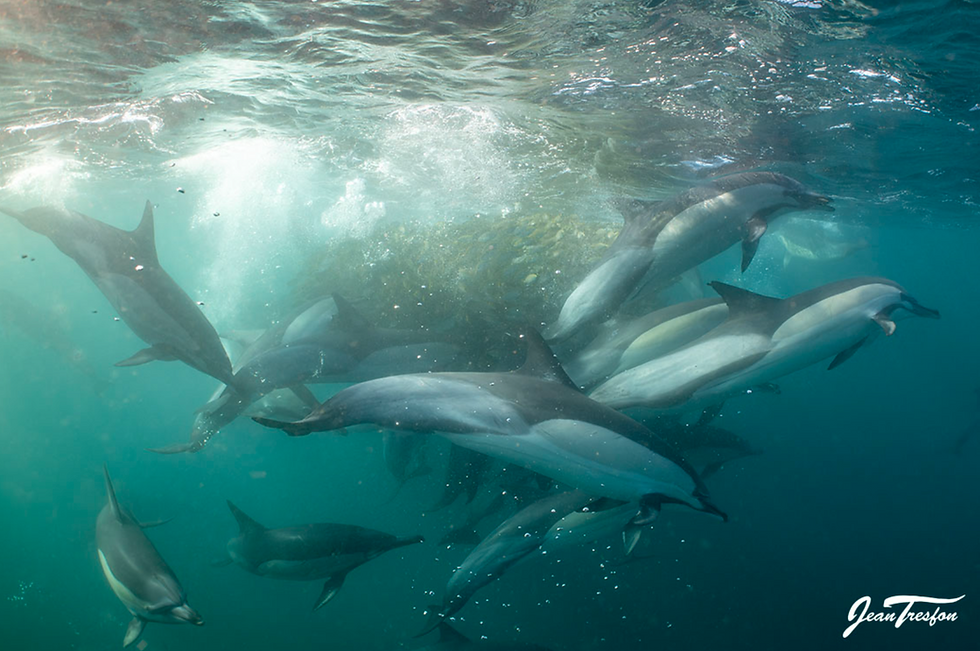Sardine Run Update – Mdumbi, Wild Coast
- Animal Ocean
- Jul 31
- 3 min read
18 June 2025
Right now, I’m walking down the hill at Mdumbi. Cape Longclaws are calling from the grass, spectacled weavers flit between palms and euphorbias, and silhouettes of guests in wetsuits drift silently toward the launch site. It’s a peaceful morning—but getting here was anything but.

Just a week ago, on 11 June, we were stuck in Komani, waiting for the floodwaters to drop. Roads were washed out. Bridges gone. The route between Mthatha and Mdumbi had been hammered by runoff and landslides. What’s usually a two-hour trip took us five, crawling through trenches, dodging collapsed trees, and inching past chaos. At one point, a treefall blocked the road completely. Four taxis squeezed through, but not us—not with a boat in tow. The drivers weren’t thrilled, and they weren’t offering help either. After a lot of pushing, shouting, and branch-breaking, we made it through.
When we finally arrived, we found Mdumbi without electricity and our usual 40-minute supply route cut off by a destroyed bridge over the Mthatha River. That’s meant long fuel and supply runs—2.5 to 3 hours each way—back to Mthatha. But with the support of the Mdumbi Backpackers team, we’ve managed. Camp is up. Rooms are sorted. Bedding laid. Welcome packs ready. Against the odds, our sardine run base is fully operational.
Firewood is scarce, so we’ve been burning driftwood in the evenings. The nights are biting cold, but the days are warm, and our team—Danny, Sam, Laura, and Libby—have taken on the challenges with absolute grace. We've improvised, adapted, and kept things moving.
On 12 June, the day after we arrived, we launched for our first sea test. Clean water just 4.5 km offshore. Dolphins everywhere. After the week we’d had, it was a relief. An emotional one.
13–17 June – Signs of Life
As the days passed, the ocean stayed calm and glassy. We took our first guests out, pushing 8 to 10 km offshore and again finding clean water. Gannets, dolphins, birds—it finally felt like the season was starting.
We encountered relaxed pods of common dolphins and, in a rare and special moment, a dwarf minke whale and calf surfaced beside the boat—only the second time I’ve seen that species here. We also spotted a few Bryde’s whales, but curiously, no humpbacks. The dirty inshore water was still pushing out, though visibility offshore was holding.
18 June – The Pulse Arrives
Today, everything changed. A light wind picked up and started injecting real energy into the ocean. It’s been a week since the flooding, and the rivers are still bleeding sediment into the sea—but the current is shifting.
From Coffee Bay to beyond Mpame, we found it: scattered diving gannets, feeding common dolphins, and tell-tale signs of sardines on the move. The activity wasn’t tightly packed yet, but it stretched for kilometers—enough to know this was a proper pulse.
We spent the day tracking the birds, watching them stall midair before plunging through the surface in flurries of feathers and spray. A Bryde’s whale surfaced beside us while we ate lunch. Later, a large hammerhead cruised below the boat. A few bottlenose dolphins joined the action too. It was happening.
Visibility still isn’t ideal for diving, but we finally saw what we needed: a clean line past the flood plume, and confirmation that the inshore current is alive and pulling sardines north.
Looking Ahead
Today was our first full day operating both boats at sea. After weeks of reroutes, mechanical tweaks, and dodging weather systems, we’re in rhythm. The coastline feels alive again.
About three weeks ago, shoals pushed past Durban, only to vanish when the floods hit. Now, things are shifting. The countercurrent is back, sweeping river plumes and sardines alike up the coast.
After many seasons chasing this phenomenon, I still wake up with that same feeling: curiosity, anticipation. Every day brings something different. This stretch of coastline is raw, remote, and completely unpredictable—but it always delivers.
There’s nowhere else I’d rather be.










Comments